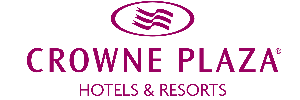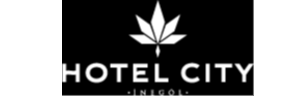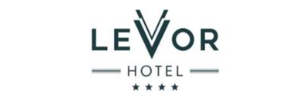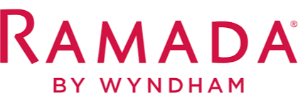This evaluation, designed for healthcare institutions, outlines sterilization steps in medical laundry services and offers a comprehensive institutional perspective for managers and operators. The content covers infection control practices, patient linen and gown washing protocols, and hygiene-certified cleaning criteria. It emphasizes control points required when working with service providers, compatibility with high-temperature washing systems, and disinfection-based textile processes. Additionally, it provides insight into healthcare-specific textile service expectations and the transition to the RABC hygiene control system. The text details performance indicators, record-keeping methods, and certification requirements essential for contractual compliance. The implementation of risk reduction and patient safety measures is paramount, making this a practical reference for institutional decision-makers.
How Does the Sterile Washing Process Work in Hospital Textile Services?
From a corporate standpoint, the sterile washing process plays a fundamental role in ensuring hygiene and infection control standards across hospital laundry operations. Each stage—ranging from material intake to classification, segregation, detergent selection, and disinfection—requires systematic execution. Key operational points include:
- Entry control: textile source tracking and labeling,
- Sorting: classification and transport based on contamination risk,
- Pre-wash: reducing stains and bioburden,
- Main wash: setting temperature and chemical dosage,
- Drying and storage: contamination-free packaging and preservation.
The sterile washing process includes specific adjustments for patient linen and gown handling. When establishing contracts with suppliers, hygiene-certified cleaning references should be mandatory. Efficiency and energy management of medical laundry infrastructure must also be evaluated. Decision-makers should prioritize compliance with hospital textile washing standards. Continuous monitoring, regular audits, and data recording ensure institutional safety. Staff training and competency checks sustain consistent implementation, minimizing infection risks and reinforcing patient safety.
Infection Control with High-Temperature Washing Systems
High-temperature washing systems are crucial in achieving infection control in medical laundry operations. The combination of temperature, chemical activity, and exposure time determines the inactivation of microorganisms. Programs tailored for healthcare institutions must meet the parameters for washing patient linens and gowns. Machine validation through regular calibration and maintenance is essential. Core requirements include accurate temperature selection, verified cycles, and recordkeeping. Factors such as water hardness and compatibility with antibacterial detergents influence performance. Sensor-based dosing systems simplify data tracking, while lab-supported infection testing strengthens decision-making. Corrective action plans should address temperature deviations, supported by trained technicians for quick response. Hygiene-certified documentation and third-party audit reports must be referenced in supplier agreements. Institutions must balance energy efficiency with reliable high-temperature performance.
RABC Hygiene Control System and Its Importance in Medical Textile Sterilization
The RABC hygiene control system enhances quality assurance in medical textile sterilization for healthcare institutions. Based on risk assessment and identification of critical control points, the RABC hygiene control system restructures processes for consistent performance. It standardizes traceability, documentation, and performance metrics. Key parameters include temperature, chemical concentration, cycle duration, and mechanical action. Internal and external audits ensure continuous compliance. Hospitals benefit from revising patient linen and gown processes under the RABC framework, reducing infection risks. Certified cleaning validations and documented disinfection procedures increase transparency across the supply chain. Training, certification, and antibacterial washing integration with high-temperature systems ensure effective implementation. Systematic monitoring allows rapid corrective actions and audit readiness, with performance metrics linked to supplier contracts.
Enhancing Patient Safety Through Antibacterial Washing Solutions
Antibacterial washing solutions are designed to reduce infection loads in medical laundry facilities. Proper product selection, concentration, and exposure time determine disinfection success. Efficacy must be verified through laboratory testing. Compatibility with textile materials ensures durability and prevents damage. Monitoring programs should include microbiological sampling and chemical analysis. Implementation protocols, staff training, and environmental checks support quality assurance. Results from sterile washing processes must be reflected in supplier performance evaluations. Environmental impact, waste management, and sustainability should guide selection. Verified product certifications must be reviewed carefully by medical administrators. Updated hygiene certificates and audits strengthen institutional reliability. Documentation of risk analyses and corrective actions should be maintained for compliance inspections. Procurement should be supported by these measurable performance data.
Hygiene-Certified Cleaning Approaches for Healthcare Institutions
Hygiene-certified cleaning procedures directly support legal compliance and patient safety objectives. Customized washing approaches must align with documented sterilization standards. Developed protocols for medical textile cleaning should be consistent with infrastructure capabilities and personnel training. Each step—sorting, washing, drying, and packaging—must have measurable performance metrics. Sterile washing audits produce documentation validating hygiene compliance. Antibacterial, high-temperature, and disinfecting wash protocols must work in synergy. The process flow must minimize contamination by moving from low to high-risk textiles. Contracts should include quality metrics and reporting obligations. Supplier assessments must demand hygiene certificates, audit reports, and technical qualifications. This transparent framework strengthens supplier accountability and governance. Certification and audit planning transform sterile washing criteria into measurable indicators. Internal quality committees should regularly review performance reports and establish improvement actions, defining KPIs and training schedules in collaboration with providers.
























